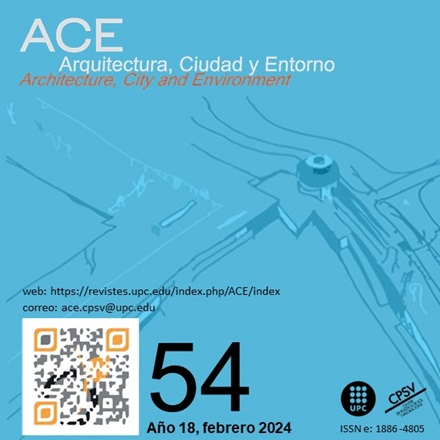Territorial Heritage in South-Eastern Madrid: An Analysis Through 20th Century Historical Cartography
DOI:
https://doi.org/10.5821/ace.18.54.12373Keywords:
cartographic analysis, landscape, cultural heritage, green infrastructureAbstract
The rapid and discontinuous urban growth that has shaped the metropolitan areas of our major cities has created significant problems related to the distortion of territorial order, the destruction or degradation of heritage, and the unsustainability of socio-ecological systems. Today, these peripheral spaces require the implementation of renewed strategies that, in contrast to the urban operations that shaped them, are in line with the environmental and cultural character that has defined and continues to define them. This challenge, recognised through the contemporary notion of landscape and its integration into territorial planning and management frameworks, involves, among other things, developing techniques to visualize and interpret the material culture of the territory beyond the recognition of specific heritage elements but also the broader legacy of space and morphology. Thereupon, a strategic framework that advocates for the need to incorporate cultural heritage from a comprehensive and extensive perspective into territorial planning is presented. This framework has been applied in the Villa de Vallecas district, southeast of Madrid, where the analysis of 20th-century maps has allowed for the identification of traces of the territory with a deeper historical significance, shaping an interesting, although currently fragmented, heritage system. Considering that there are now significant initiatives aimed at the landscape restoration of this area, it is necessary to include territorial heritage in these projects, thus ensuring the preservation of collective memory, the historical continuity of the landscape, and respect for its distinguishing features.
Downloads
Published
Issue
Section
License
| INTELECTUAL PROTECTION CRITERIA |
At this moment, it is count with the "Oficina Española de Patentes y Marcas", while global protection it is being processed by the World Intelectual Property Organization (OMPI/WIPO). Nevertheless the International Standard Serial Number Office (ISSN) has given the following numbers ISSN: 1886-4805 (electronic version) and 1887-7052 (paper version). All articles will be peer reviewed, using double blind reviewing. |
| COPYRIGHT |
The article contents and their comments are authors exclusive liability, and do not reflect necessarily the journal editor commitee's opinion. All ACE published works are subject to the following licence CC BY-NC-ND 3.0 ES http://creativecommons.org/licenses/by-nc-nd/3.0/es/ It implies that authors do not hold nor retain the copyright without restrictions but only those included in the licence. |





































